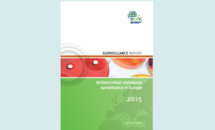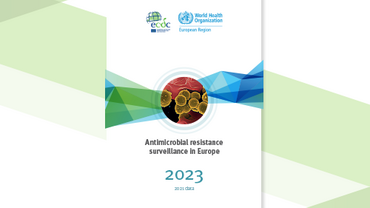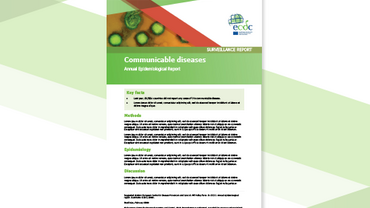Antimicrobial resistance surveillance in Europe 2015
This report presents antimicrobial resistance data for seven microorganisms of major public health importance: Escherichia coli, Klebsiella pneumoniae, Pseudomonas aeruginosa, Acinetobacter species, Streptococcus pneumoniae, Staphylococcus aureus, and Enterococci. For 2015, data were reported by 29 countries. The report also presents trend analyses for the period 2012–2015.
The tables below are available in a downloadable format (see publication data):
- E. coli, Tables 3-1 to 3-7
- Klebsiella, Tables 3-8 to 3-13
- Pseudomonas, Tables 3-14 to 3-20
- Acinetobacter, Tables 3-21 to 3-25
- Streptococcus, Tables 3-26 to 3-28
- Staphylococcus, Table 3-29
- Enterococci, Tables 3-30 and 3-31
Executive summary
Increasing combined resistance and carbapenem resistance in certain bacteria remain a concern.
Over the last four years, antimicrobial resistance in gram-negative bacteria, such as Escherichia coli and Klebsiella pneumoniae, is on the rise in many parts in Europe.
Of special concern is the increase in combined resistance to third-generation cephalosporins, fluoroquinolones and aminoglycosides, which has increased significantly both at EU/EEA level and in many of the Members States between 2012 and 2015.
The increase in combined resistance is worrying, as this leaves few treatment alternatives for patients suffering from infections caused by these bacteria. It may also lead to an increased use of carbapenems – a last-line group of antibiotics -, which contributes to the emergence of carbapenem-resistant bacteria.
Although the percentage of isolates resistant to carbapenems remained low in most EU/EEA countries in 2015, resistance to carbapenems increased significantly for K. pneumoniae at EU/EEA level between 2012 and 2015. A majority of the carbapenem-resistant isolates were also resistant to third-generation cephalosporins, fluoroquinolones and aminoglycosides, further complicating the choice for effective treatment.
The ECDC Annual report on Antimicrobial resistance surveillance in Europe
The ECDC annual report combines the antimicrobial resistance data reported to EARS-Net by 30 EU/EEA countries in 2016 (based on 2015 data), with trend analyses of data for the period 2012–2015.
Since November 2016, the latest antimicrobial resistance data for Europe are available in the ECDC Surveillance Atlas on Infectious Diseases, as interactive maps and tables. Highlights of the antimicrobial resistance data had already been released for the European Antibiotic Awareness Day in November 2016.
Download

Publication data
Data
Table Antimicrobial resistance surveillance in Europe 2015
Tables from the Antimicrobial resistance surveillance in Europe 2015
Data
Tables in PNG format: antimicrobial resistance surveillance in Europe 2015
Tables in PNG format: antimicrobial resistance surveillance in Europe 2015
Data
Figures in PNG format: antimicrobial resistance surveillance in Europe 2015
figures in PNG format: antimicrobial resistance surveillance in Europe 2015





